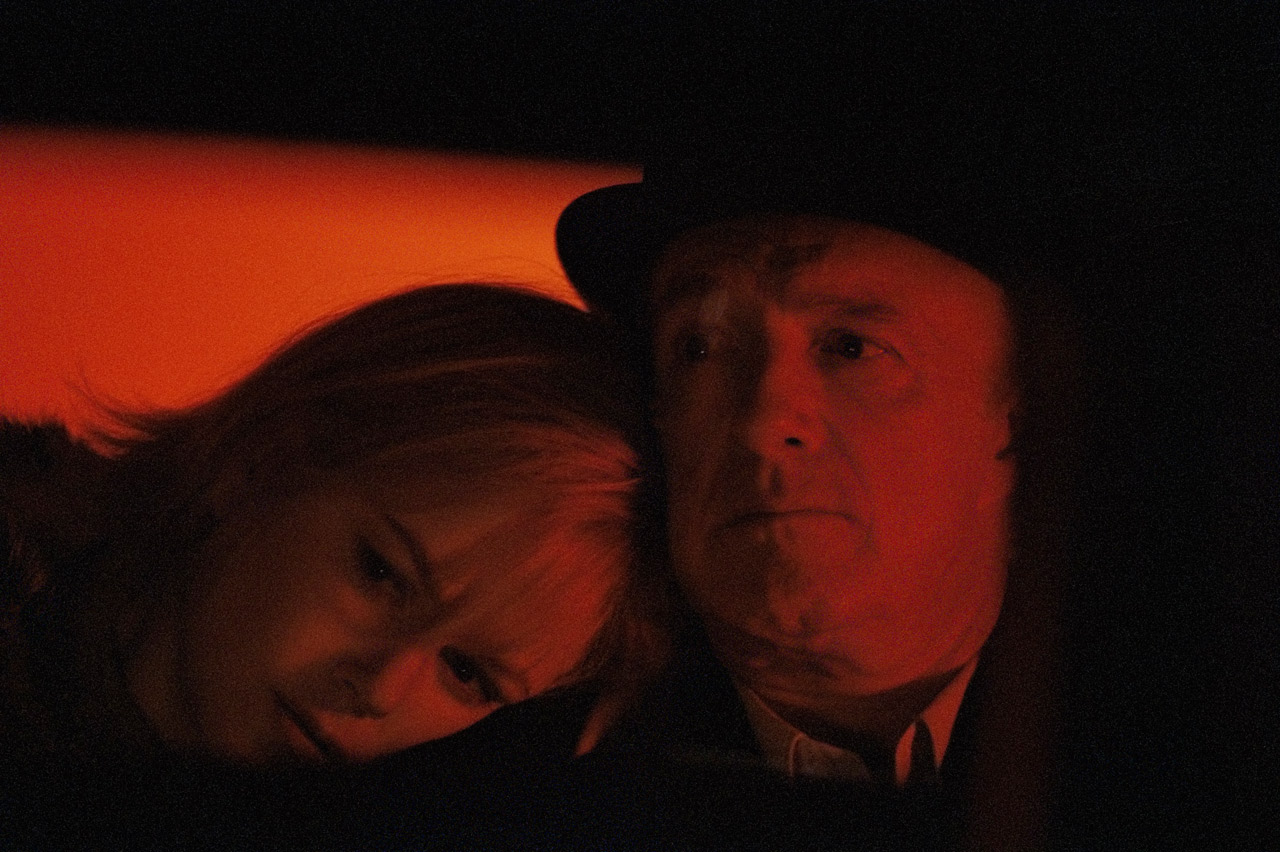To Die For

To Die For is an ambitious little flick about the seductive lure of stardom, the suggestive power of Nicole Kidman's lips, and the promise of liberation held by a teenage flunky with a handgun who's willing to lose everything for your love. The movie is ambitious, and sounds terrific on paper, but director Gus Van Sant (My Own Private Idaho, Even Cowgirls Get the Blues) can't pull everything together to make any impact at all. It's enough to make you wonder what he's doing with this script in the first place.
Get To Die For on Blu-ray from Amazon.comKidman plays the sort-of-titular role of Suzanne Stone, the small town TV "weather girl" who makes international tabloid headlines when she's accused of having her husband Larry (Matt Dillon, doing fine) murdered by her teenage lover Jimmy (Joaquin Phoenix) and his friends Russell (Casey Affleck) and Lydia (Alison Folland). Joyce Maynard's novel is apparently a fictionalized version of a very true incident in a small New Hampshire town, but the movie excludes any understanding of that situation by chasing its own tale, a cautionary comic book painted in broad strokes and saturated colors.
Screenwriter Buck Henry and director Gus Van Sant go ga-ga over their own technique in the first few shots, when Suzanne and other characters address the camera directly, as though being interviewed for a TV news special report. Janice, Larry's lesbian sister, explains that she knew from the start that Suzanne was a four-letter word beginning with C (we're left to fill this in from the backs of our own filthy little minds, but the word she's looking for is cold). Lydia holds forth for the camera on Suzanne's philosophy and TV-centric world view. Jimmy mumbles half-articulately about how in love he is with Suzanne. And the parents of Suzanne and Larry are guests on a talk show, explaining that they knew the marriage was doomed from the start. All of this is intercut, of course, with objective flashbacks illustrating the events the characters relate. The novelty of this approach wears off almost immediately, and the herky-jerky cutting back and forth from scene to scene becomes tiresome, albeit appropriate to the movie's theme.
Maybe it's a shame that the studio has given To Die For away, both in the marketing campaign (Nicole Kidman = murderous sexpot) and in the movie's own title sequence, which runs headlines and lurid tabloid copy underneath the credits over and over again. There's really only one major event in the whole film, and the surrounding material seems edited by an iron fist wrapped around a machete — Whap! Whap! No surprises at all.
All that's left for the audience is to sit and wait to see the thing itself happen, and it happens pretty much the way you expect. You might expect Suzanne's casual cruelty to be shocking, but her dialogue is strictly rote. Kidman's performance is perfectly vacuous, with the corners of her mouth tugging this way and that as she titters a little over every superficial thing. Her name is suddenly being bandied about as Oscar material, suggesting that critics still love it when a woman can sex it up and play the embodiment of female evil at the same time. She's certainly something to look at, but her performance shares a calculated coldness that turns the movie blue.
So it's cold, but it's not quite a corpse. Where is the beating heart of To Die For? Well, Van Sant still has style to spare, and his sympathy is obviously with the kids, who are better drawn than the other characters. In a funny way, Lydia is allowed to be the smartest person in the whole film, reflecting at length on Suzanne's world view while managing to keep at arm's length, and becoming her own kind of celebrity. Pudgy Lydia is the antithesis of Suzanne, who's clearly Miss America material even if she's not quite wholesome. And when we see Suzanne in her underwear, it's either to make a point of her distance from Larry or to show her cajoling a promise from her teenaged lover. Meanwhile, the camera lingers on Jimmy's trembling, naked body, obviously far more intrigued by the nature of his lost soul than Suzanne's corrupt one. More lively is a devilish twist near the end of the film, and watch out for Canadian director David Cronenberg in a cameo.
The real problem is that for a black comedy, To Die For is mighty unfunny. Finally, the movie's own cynicism does it in. To Die For is mainly contemptuous and condescending, with little of the wit or insight that marks a strong comedy. Reviewers have been comparing it, believe it or not, to Pulp Fiction, apparently believing that the two movies share a hip self-awareness. But that's dead wrong. Where Tarantino worked Pulp Fiction through with an honest, burning urgency and some kind of moral message that managed to transcend its own essential brutality (hey, it's more fun than it sounds), Van Sant can't lift To Die For out of its own narcissistic meanderings. Here's a movie that's very pleased with itself, but doesn't really speak to us.
The message here? Every stereotype you've ever heard is absolutely true. If she goes down on you, you'll do whatever she says. Loser children with no future live in trailer parks and listen to abrasive heavy metal. The world is a stupid, superficial place. (Like we needed Gus Van Sant to show us that!)
Posted by on November 14, 2023 7:27 PMGet To Die For on Blu-ray from Amazon.com
